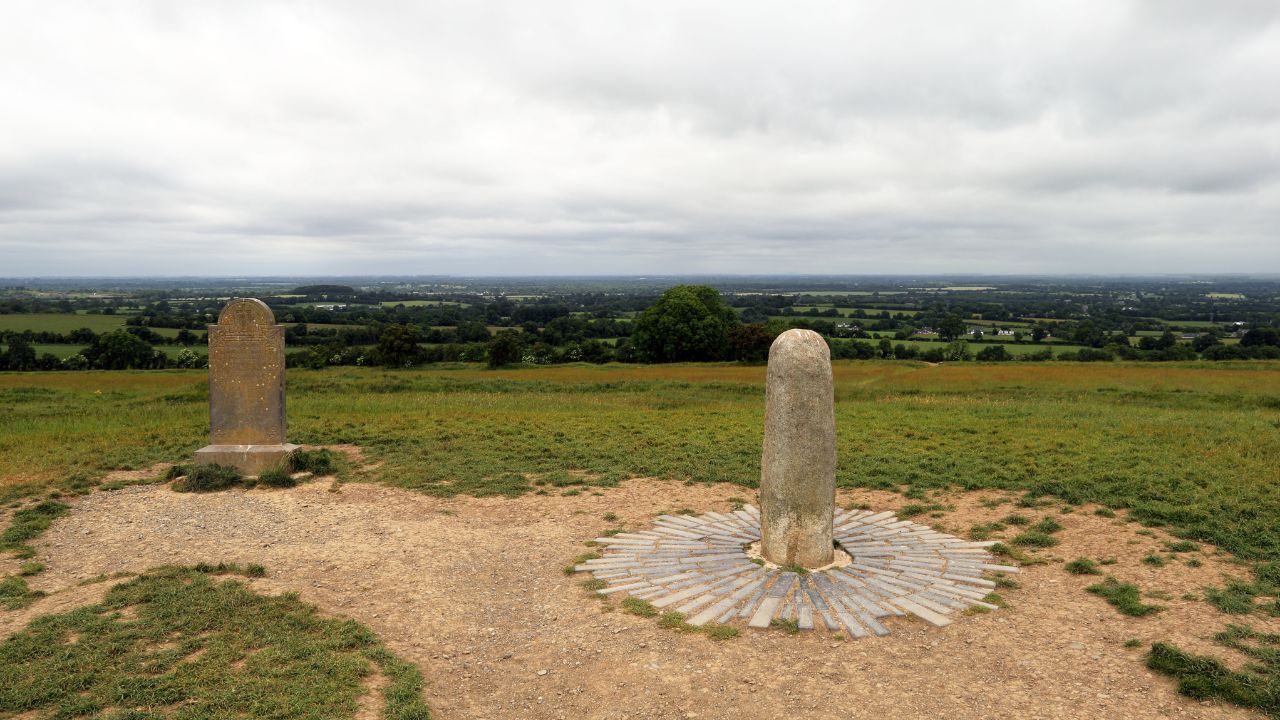
Sacred sites drew people to pray, bury the dead and honor their transition to the afterlife, and ask for blessings from the gods. We have marked these places recognized as spiritually significant. From a pile of rocks, to standing stones, to altars, outdoor cathedrals and eventually buildings, these edifices allowed people to worship in a more formal way, and in groups.
Many ancient sites have layers of historical, political, and religious importance, built over centuries to create a large complex. An example of this is the Hill of Tara, where five roads converged to connect all of Ireland. Different structures include burial cairns, a church, and a royal ceremonial marker called “The Stone of Destiny” where Kings were inaugurated. It was believed the stone would roar when a rightful King stood upon it (King Arthur’s romanticized encounter there is the stuff of popular fiction.) Some stones feature carving and depictions of deities.
In some instances, entire towns and cities grew up around these spots. At Stonehenge in Ireland, the standing stones are literally the tip of the iceberg of the buried complex underneath them.
Many of these monuments were also tombs, like the Great Pyramids of Egypt and the Mayan “Temple of Inscriptions.” Some were also built to point to a celestial event of significance, such as equinoxes or solstices. There are many indications that early megalithic builders were aware of both astronomy and geometry, and combined them deliberately into their constructions.
The controversial study of ley lines purport to show many sacred sites in alignment with each other. The field of archeoastronomy is exploring these connections as an energetic, electromagnetic earth grid (sometimes compared to Chinese lung mei or "dragon paths"). The points where several ley lines intersect are said to be very powerful. The Twin Towers of the World Trade Center, once the world’s tallest erection - a modern altar to capitalism and a national “standing stone” - was purportedly on one of these spots. After 9/11 it is a now somber memorial of the people that died there – and like other altars in history, it is a recessed reflection pool (yin/yang anyone?).
So, we come back around to the sacredness of life and death. Well into the modern era, graveyards were often next to churches. And to this day we go to graves to honor and remember, and to appreciate the mystery of the unknown.
Peace, love and healing -

Bear
Thank You for Being Here
If my thoughts and observations are interesting to you, please consider supporting my work by subscribing. If that’s not feasible for you, I also publish the blog on Medium, Substack and BlueSky.
I wish for you - and all of us - a new year of engagement and conscious growth!
